While the sizes of stars in the night sky are not apparent to the naked eye, we can see subtle colours in brighter stars
Not all stars are the same size or colour, but why is this?
In this beginner's guide we'll go through the science of star colours and reveal why some stars are red and some stars are blue, and why stars are different colours at all.
Star colours and temperature

Star colours are an indication of how hot a star's visible ‘surface’ is.
As a star’s temperature increases, as a result of there being more gas in the star – and hence more fuel to burn – it becomes hotter.
Its colour changes from orange, through yellow, to white.
Hottest stars are blue, with temperatures up to 40,000ºC. Coolest stars are red with surface temperatures of about 3,000ºC.
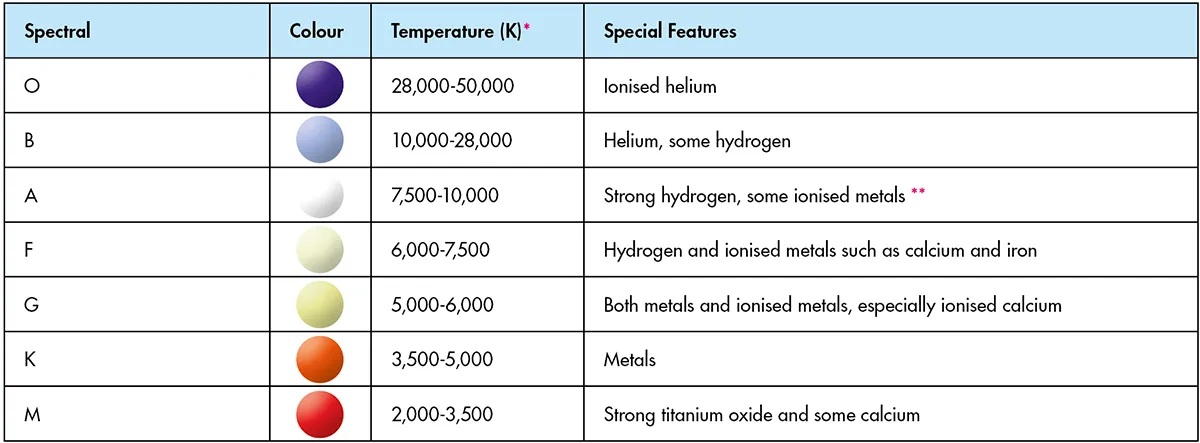
You might have seen diagrams showing how different stars compare if they are put next to each other.
This way you can compare the large, bluish star Vega with the seemingly tiny red star of Proxima Centauri.
The artist's illustration at the top of this page shows how stars glow different colours according to their temperature.
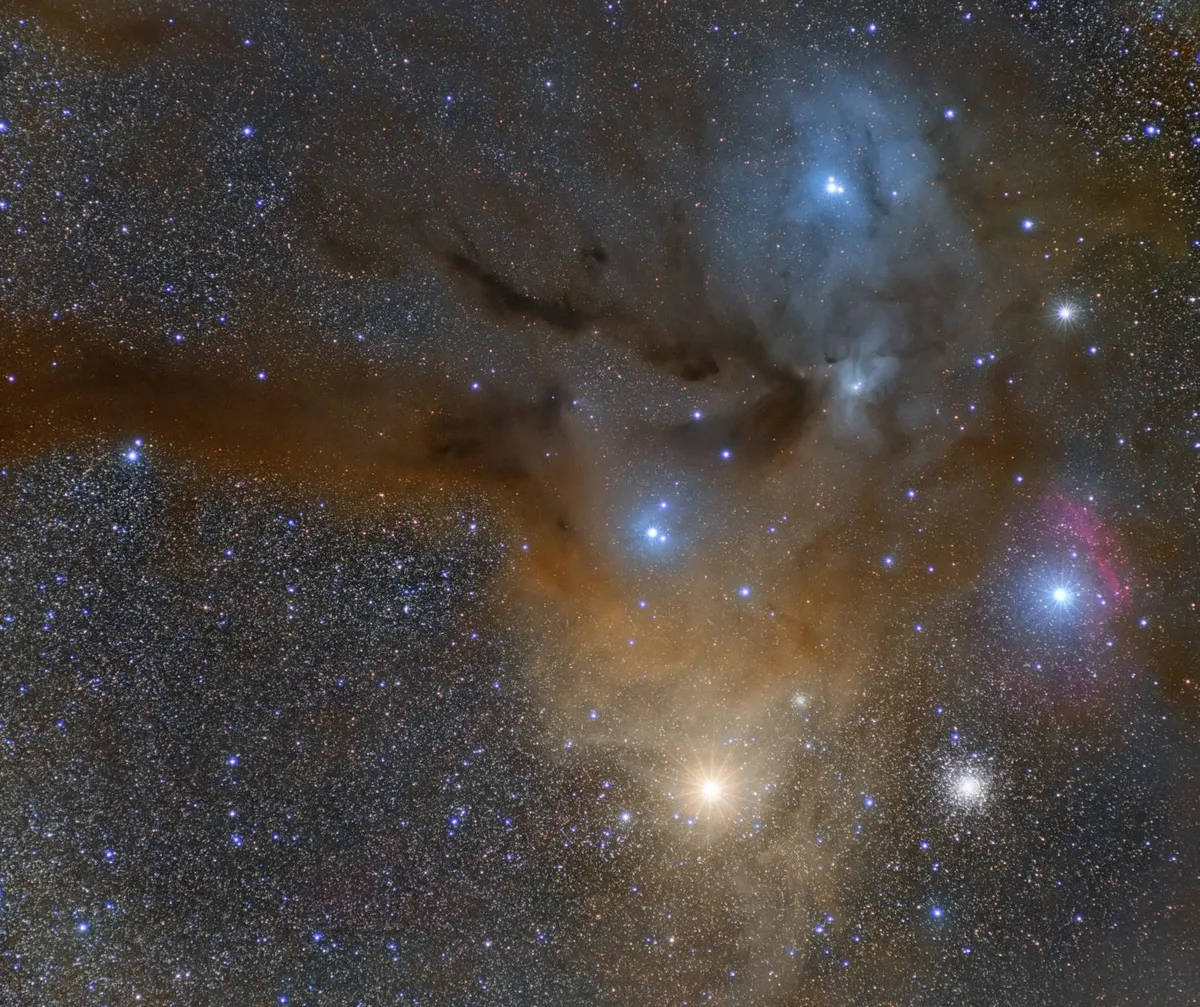
If you look up on a clear night, you’ll see there are bright stars that sparkle with a tint of their true colours.
Some stars also appear to flicker between different colours as a result of the distorting effects of Earth's atmosphere, which is also the reason why stars twinkle.
There are the red stars of Betelgeuse in Orion, Aldebaran in Taurus and Antares in Scorpius. There’s the golden-looking Arcturus in Boötes, the yellowish Capella in Auriga and the blue-whites of Rigel in Orion and Spica in Virgo.
But this is only a hint of the true nature of the heavens. If only our eyes could see them, the entire night sky would be filled with the most amazing colours.
So what’s up with our eyes? Nothing, of course – they’re just not able to pick up colours in faint light. We evolved as a daytime species, and our eyes evolved to work with the powerful light from the Sun.
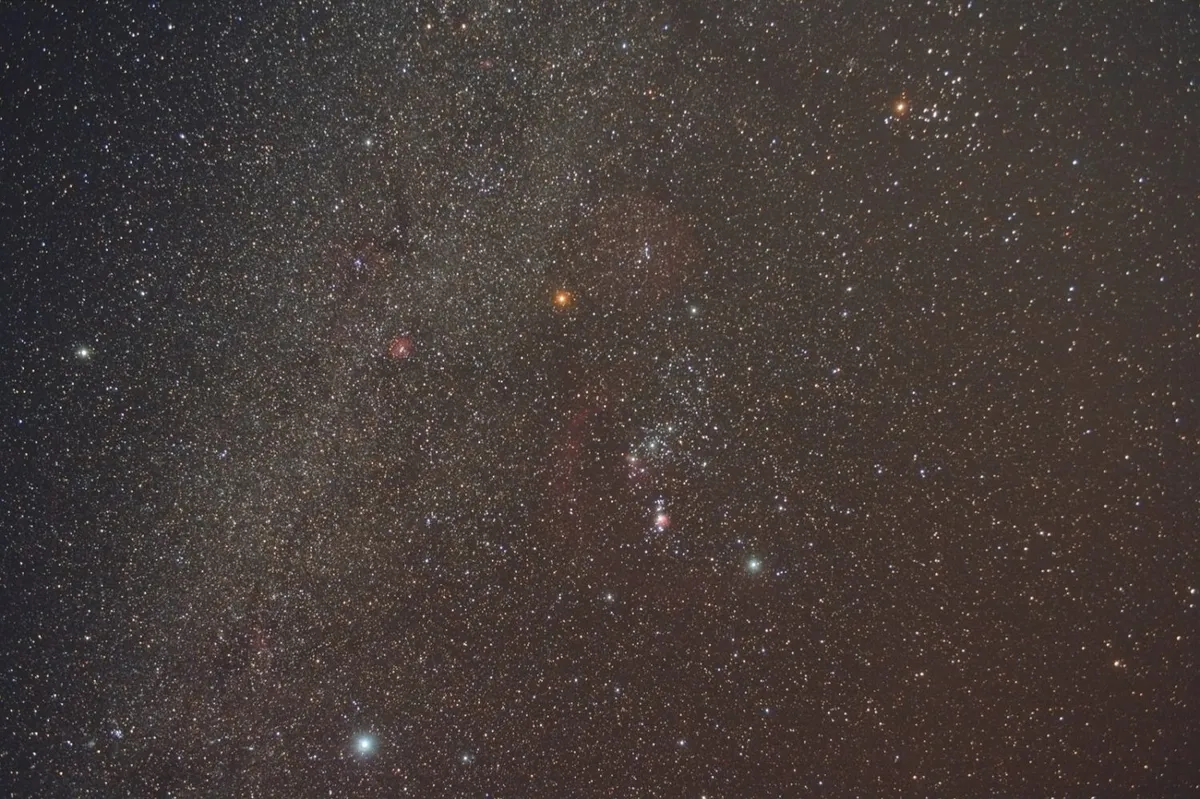
Why some stars appear white
Inside each eyeball we have cells that enable us to see, called rods and cones. The more numerous rods pick up light intensity, while the cones add in the colour.
As the light intensity falls, the cones begin to switch off and go to sleep. A good example of this can be witnessed in the evening after the Sun has set.
If you are outside, you may have noticed that the general scene begins to lose its colour as dusk sets in.
This is simply due to your cones not having enough light to function, so they turn off.
If we translate this to the sky, it’s easy to work out that it is only the brighter stars that are able to set off any of the cones – thus enabling us to see some colour.
The other stars are too faint for this and so with the naked eye we only see them as white.
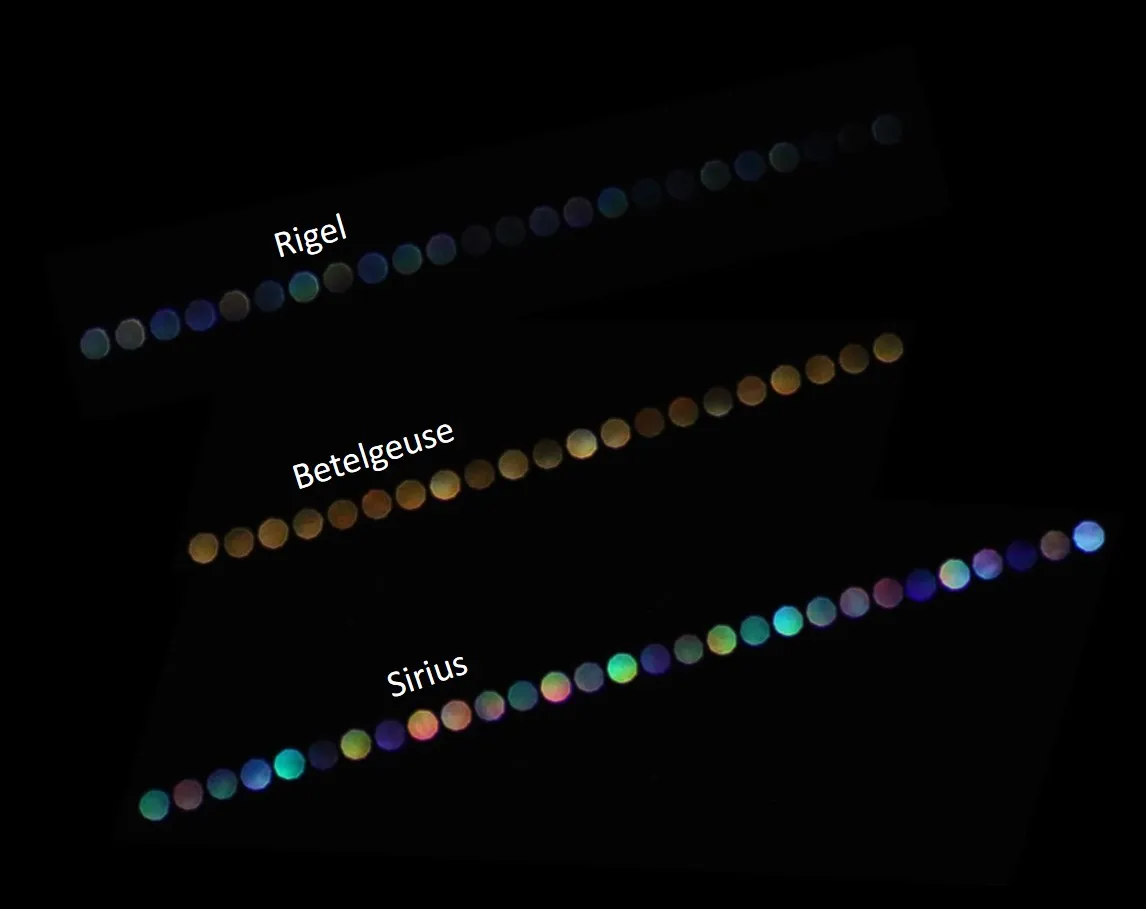
Observing star colours
There are a few things to take into account if you're interested in seeing a variety of star colours.
Time of year
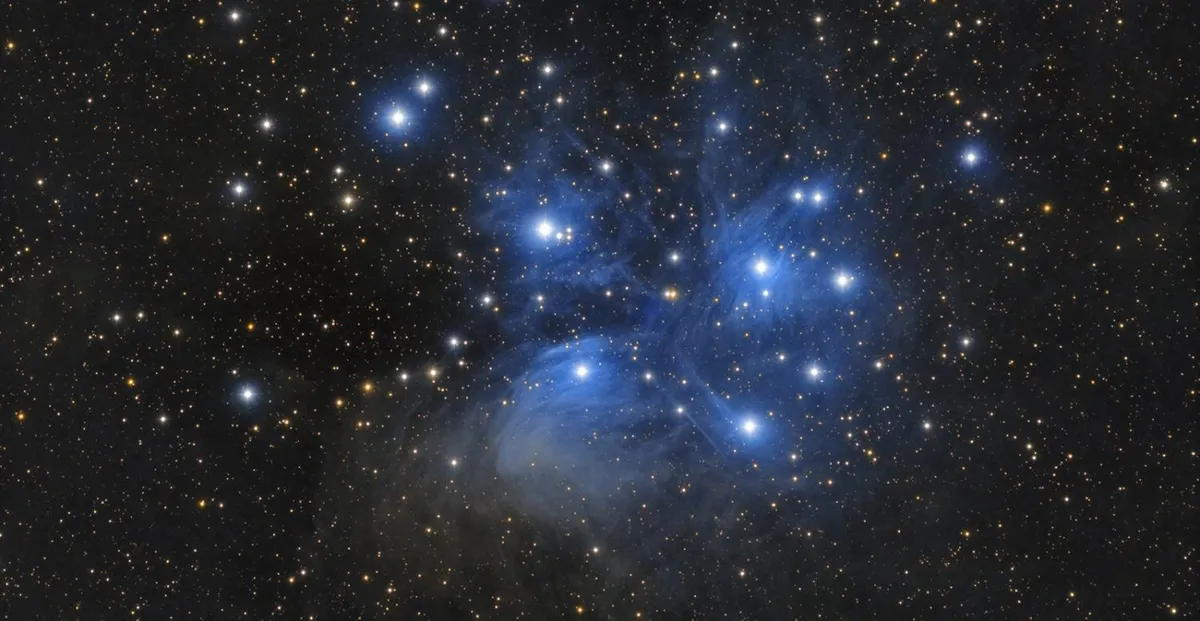
For naked-eye stargazing in particular, one of the main factors affecting your chances of seeing any coloured stars is choosing the right time of year.
The winter skies in particular are graced with the most bright stars that show a colour tint. However, there is the odd star or two visible at any time in any month.
Light pollution
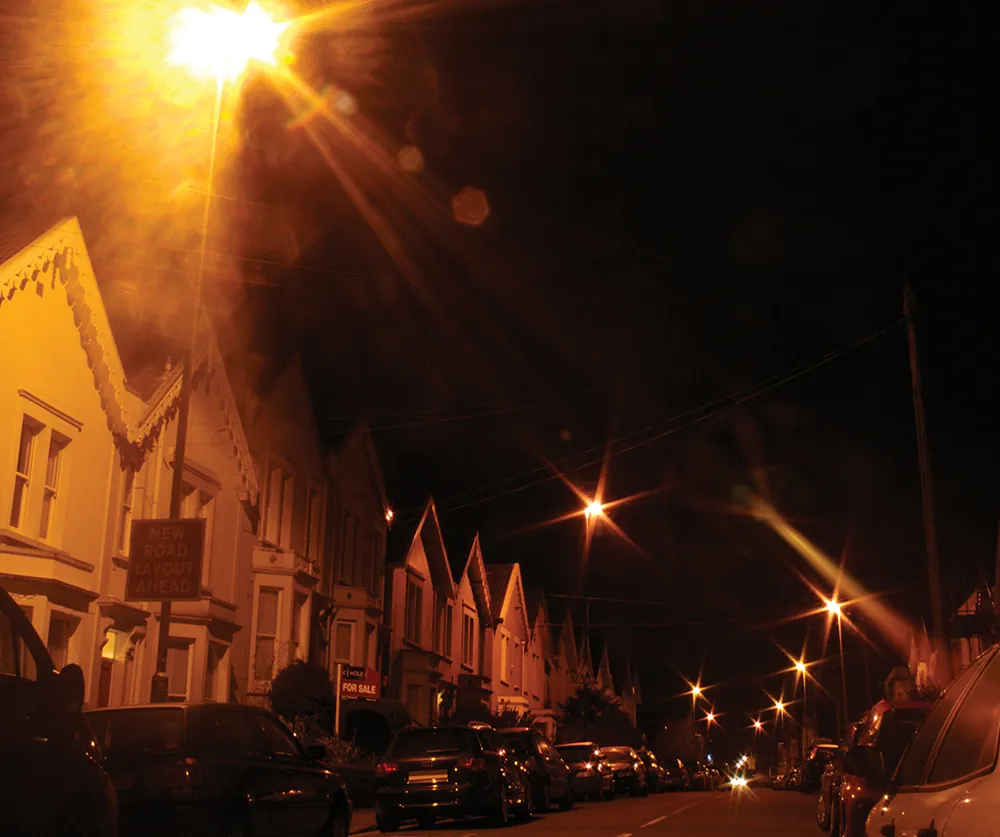
It cannot be underestimated how detrimental streetlights or general town sky-glow is.
We all know that artificial lighting can wash out the number of stars, and it does nothing for the colours of the stars that remain visible either. Therefore, the darker your observing location, the better.
Telescopes & binoculars

By using one of these, you can more or less overcome all the previous hindrances and obstacles to good colour-spotting.
A telescope will show the fainter stars and by magnifying their light, it’ll bring out their colours too. You can also try de-focusing, thereby increasing the size of a star’s light from a point source to a coloured disc.
Dark adaption

Make sure your eyes are dark-adapted. Staying in a dark place for an hour will enable your rods and cones to get as much out of the feeble starlight as possible.
Even better: get yourself to a local dark-sky location. You should also remember to use a red-light torch when finding your way in the dark, the red light won’t affect your dark adaptation as much as other colours.
This article originally appeared in the July 2011 issue of BBC Sky at Night Magazine.
